Try a free course now
Want to see if our CPD works for you? Try a free verifiable CPD course now.
Get started- 17,859 learners
- 74 countries
- 1,500+ CPD resources
- 44% online
Why accountingcpd?
At accountingcpd we help accountants grow by providing high quality CPD, that will genuinely make a difference to you in your career.
Whether you want to keep up to date with the latest changes and trends, develop new skills, or prepare yourself for the next job, accountingcpd has what you need to succeed.
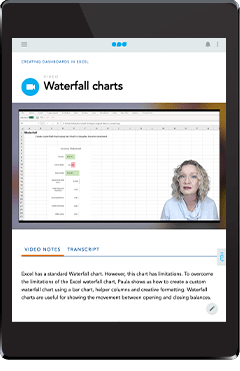
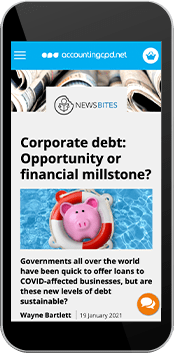
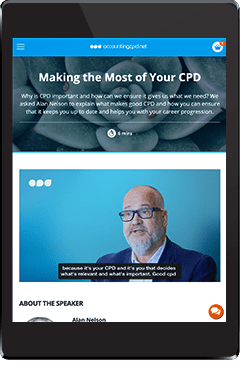
Huge range
Over 1,500 CPD resources to choose from. Keep up to date AND develop your professional skills with courses on a wide range of topics.
CPD Certification
Approved by leading accounting bodies, keep and download your CPD certificates on your personal CPD dashboard. Audit proof and stored securely.
Flexibility
Learn what you want, when and where you want to. From 15-minute CPD Bites, 4-hour courses, to longer-form structured diplomas and qualifications.
Partner approved
We work with leading professional bodies and expert authors to ensure you stay up to date and are able to embrace the future of our profession.
Offers
Courses
Fast and Effective Monthly Reporting

Getting monthly reporting right is essential for any business. This course helps you create timely, relevant, and reliable reports that meet user needs and significantly increase the chances of business success.
Mental Wellbeing: Avoiding Burnout

Mental health issues affect more than half of all accountants and account for the majority of days lost due to ill health. This course offers practical ways to help us maintain our own mental health and help to create a happy and accepting work environment.
2024-25 Update: IFRS

This course covers recent updates to the IFRS reporting framework, including a brand new general standard, a post-implementation review of contract revenue recognition, an Exposure Draft covering financial instruments, and more.
Financial Modelling: Building a Model

Financial modelling is an invaluable skill for accountants but in the wrong hands, models can be confusing and misleading. This course will teach you to build robust financial models in Excel to forecast future performance, and to measure and respond to uncertainty and change.
AI for Accountants
Are you ready to embrace the future of accounting with AI? Artificial intelligence is reshaping how accountants strategise, predict, and advise. This course will help you to get to grips with the growth of AI and what it means for the profession and to develop the tools you need to use AI effectively.
IFRS 18: Presentation and Disclosure in Financial Statements
IFRS 18, the first new IFRS since 2017, is going to change the way you work. This course looks in detail at the key elements of this new standard and how it will impact you and the businesses that you work for.
Cash Management
This course explores the delicate balancing act of cash management. It covers controlling cash flows, monitoring liquidity, detecting fraud, and fostering a culture that focuses on cash.
Professional Credibility
Building your professional credibility is important in order to be seen as knowledgeable, fair and dependable. Understand how you can do this, with practical steps covering business acumen, professional scepticism, ethics, communication and your authoritative voice.
Credit Management
Businesses exist to make profits but, despite this, many businesses leak cash through poor credit management. This course looks at the benefits of a solid credit management department, and how you can maintain a robust system that keeps your organisation profitable and resilient.
Voices in Accountancy: Leaders in the Profession
Hear from the experts and use their insights to help you add value in your organisation and get inspired. Our video interviews with leaders who've made their mark on our profession cover everything from AI and advanced data analytics to diversity, wellbeing and leadership and more.
Data Analysis With Excel

As a finance professional you use Excel to analyse data, but how often do you overlook Excel's useful features? This course explores some basic and more advanced features of Excel's PivotTable tool, covering Power Pivot and DAX (Data Analysis Expressions) formulas.
Corporate Governance

Good corporate governance entails meeting standards of good practice in relation to board leadership and effectiveness, remuneration, accountability and relations with shareholders.
IFRS 19: Subsidiaries without Public Accountability: Disclosures
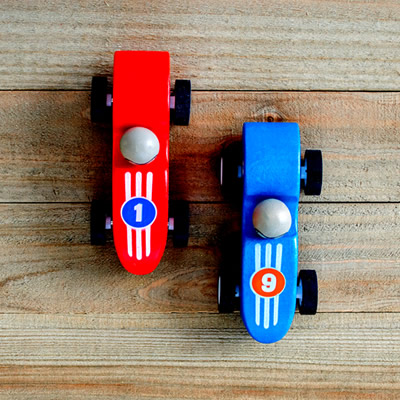
IFRS 19 has a narrow scope, yet the implications for the financial statements of the entities that adopt it will be significant. This course examines the details of the changes IFRS 19 implements, and what information is needed - and no longer needed - in the disclosures.
Excel Productivity Booster

It's easy to find yourself using Excel the same way for years at a time. This course concentrates on a range of practical and simple techniques that can make spreadsheets quicker to set up, easier for the user to use, more automated, and guard against career-threatening errors.
Creating a World-Class Finance Function

What is a world-class finance function, and why should you want to create one in your workplace? This course will help you to implement best practice in finance and accounting to optimise quality and efficiency, and to provide the best possible service to your stakeholders.
Hybrid Working

This course shares best-practice guidance about hybrid working for individuals, teams, and managers. From running hybrid meetings to recruitment and team management, you'll explore the skills and tools that enable you and your team to work at your best no matter where you are.
Economics Every Accountant Should Know

Economic concepts can help us to make better decisions. This course will challenge and develop the way you think about pricing, strategy, investment appraisal and customer relationships.
Making Monthly Reports Worth Reading

World class finance functions produce monthly reports that managers actually read. This course enables you to delight your audience by setting clear objectives, creating compelling visuals and creating monthly reports that drive business improvement.
2024-25 Update: Auditing

This course explores key current issues in auditing. It looks at control and risk factors key to understanding an entity, examines ISA 320's approach to calculating materiality, explores the IAASB’s targeted revisions proposed for ISA 570 Going Concern and considers an auditor's responsibilities when using the work of an expert.
Writing Effective Financial Reports

How do you make sure a report communicates effectively and tells the right story? Maximise the impact of your reports with practical tips and guidance.
Building a Spreadsheet Forecasting Model

This course explains how to build and operate spreadsheets for forecasting, planning and business models. It's a practical guide, which takes a step-by-step approach to building, utilising and maintaining models.
AI Governance and Risk Management

People are worried about the effect AI could have on society. This course examines how businesses can construct trustworthy AI systems, operate them responsibly, and establish a robust governance framework to support ethical usage.
2024-25 Update: Excel

This course covers recent updates and improvements to Excel, including the latest tools to help you handle data, details of formula enhancements, an introduction to the GROUPBY, PIVOTBY, and PERCENTOF functions, as well as some uses for the generative AI powers of Excel’s Copilot.
Integrating AI into your Finance Function

AI technology is already able to enhance, improve and administer many finance functions, so the time to adopt the appropriate AI tools into your working practices is now. This course looks at how to get your team on board and successfully integrate AI into your finance function.
AI and Ethics

AI is transforming how we work, offering unprecedented efficiency and insights, but also significant ethical challenges. How do we ensure AI operates fairly, transparently, and in alignment with professional standards? Find out how to harness AI responsibly while upholding the integrity and trust central to the accounting profession.
Critical Thinking for Accountants

Critical thinking is becoming increasingly vital for accountants, as businesses depend on you to deliver insight, analysis, and proposals to improve your or your clients' business. This course examines critical thinking techniques and provides practical guidance on using them to benefit the organisations you work with.
Preventing Financial Crime
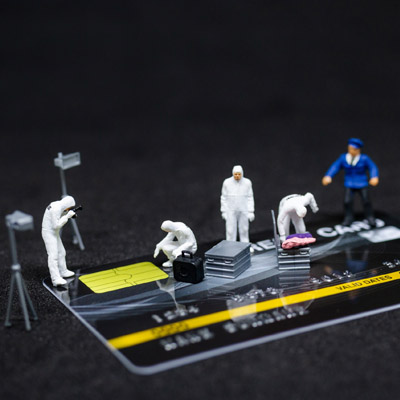
Understand the various types of financial crime and the controls that can be used to limit the opportunities for fraudsters to commit them. Look at how to create the right culture within an organisation to discourage collusion in fraud and encourage reporting and disclosure.
Ethics in Action: What Would You Do?

Ethics can be a grey area. This course uses case studies and scenarios to equip you with the necessary tools to recognise potential ethical dilemmas and determine the best approach to them, in line with the ethical framework you adhere to as an accountant.
Generative AI

Generative AI is the next big thing, but is it really all it's cracked up to be? This course will cut through the hype and explain where generative AI shines, where it stumbles, and how to work alongside it rather than be replaced by it.
Fast and Effective Monthly Reporting

Getting monthly reporting right is essential for any business. This course helps you create timely, relevant, and reliable reports that meet user needs and significantly increase the chances of business success.
Mental Wellbeing: Avoiding Burnout

Mental health issues affect more than half of all accountants and account for the majority of days lost due to ill health. This course offers practical ways to help us maintain our own mental health and help to create a happy and accepting work environment.
2024-25 Update: IFRS

This course covers recent updates to the IFRS reporting framework, including a brand new general standard, a post-implementation review of contract revenue recognition, an Exposure Draft covering financial instruments, and more.
Financial Modelling: Building a Model

Financial modelling is an invaluable skill for accountants but in the wrong hands, models can be confusing and misleading. This course will teach you to build robust financial models in Excel to forecast future performance, and to measure and respond to uncertainty and change.
AI for Accountants

Are you ready to embrace the future of accounting with AI? Artificial intelligence is reshaping how accountants strategise, predict, and advise. This course will help you to get to grips with the growth of AI and what it means for the profession and to develop the tools you need to use AI effectively.
IFRS 18: Presentation and Disclosure in Financial Statements

IFRS 18, the first new IFRS since 2017, is going to change the way you work. This course looks in detail at the key elements of this new standard and how it will impact you and the businesses that you work for.
Cash Management

This course explores the delicate balancing act of cash management. It covers controlling cash flows, monitoring liquidity, detecting fraud, and fostering a culture that focuses on cash.
Professional Credibility

Building your professional credibility is important in order to be seen as knowledgeable, fair and dependable. Understand how you can do this, with practical steps covering business acumen, professional scepticism, ethics, communication and your authoritative voice.
Credit Management
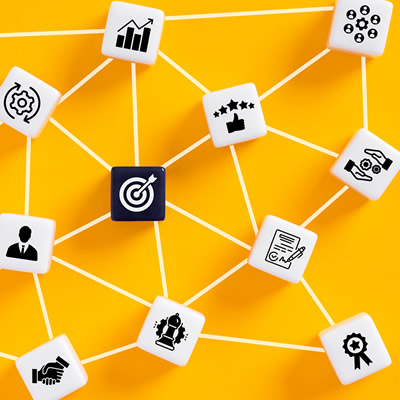
Businesses exist to make profits but, despite this, many businesses leak cash through poor credit management. This course looks at the benefits of a solid credit management department, and how you can maintain a robust system that keeps your organisation profitable and resilient.
Voices in Accountancy: Leaders in the Profession

Hear from the experts and use their insights to help you add value in your organisation and get inspired. Our video interviews with leaders who've made their mark on our profession cover everything from AI and advanced data analytics to diversity, wellbeing and leadership and more.
Data Analysis With Excel

As a finance professional you use Excel to analyse data, but how often do you overlook Excel's useful features? This course explores some basic and more advanced features of Excel's PivotTable tool, covering Power Pivot and DAX (Data Analysis Expressions) formulas.
Corporate Governance

Good corporate governance entails meeting standards of good practice in relation to board leadership and effectiveness, remuneration, accountability and relations with shareholders.
IFRS 19: Subsidiaries without Public Accountability: Disclosures

IFRS 19 has a narrow scope, yet the implications for the financial statements of the entities that adopt it will be significant. This course examines the details of the changes IFRS 19 implements, and what information is needed - and no longer needed - in the disclosures.
Excel Productivity Booster

It's easy to find yourself using Excel the same way for years at a time. This course concentrates on a range of practical and simple techniques that can make spreadsheets quicker to set up, easier for the user to use, more automated, and guard against career-threatening errors.
Creating a World-Class Finance Function

What is a world-class finance function, and why should you want to create one in your workplace? This course will help you to implement best practice in finance and accounting to optimise quality and efficiency, and to provide the best possible service to your stakeholders.
Hybrid Working

This course shares best-practice guidance about hybrid working for individuals, teams, and managers. From running hybrid meetings to recruitment and team management, you'll explore the skills and tools that enable you and your team to work at your best no matter where you are.
Economics Every Accountant Should Know

Economic concepts can help us to make better decisions. This course will challenge and develop the way you think about pricing, strategy, investment appraisal and customer relationships.
Making Monthly Reports Worth Reading

World class finance functions produce monthly reports that managers actually read. This course enables you to delight your audience by setting clear objectives, creating compelling visuals and creating monthly reports that drive business improvement.
2024-25 Update: Auditing

This course explores key current issues in auditing. It looks at control and risk factors key to understanding an entity, examines ISA 320's approach to calculating materiality, explores the IAASB’s targeted revisions proposed for ISA 570 Going Concern and considers an auditor's responsibilities when using the work of an expert.
Writing Effective Financial Reports

How do you make sure a report communicates effectively and tells the right story? Maximise the impact of your reports with practical tips and guidance.
Building a Spreadsheet Forecasting Model

This course explains how to build and operate spreadsheets for forecasting, planning and business models. It's a practical guide, which takes a step-by-step approach to building, utilising and maintaining models.
AI Governance and Risk Management

People are worried about the effect AI could have on society. This course examines how businesses can construct trustworthy AI systems, operate them responsibly, and establish a robust governance framework to support ethical usage.
2024-25 Update: Excel

This course covers recent updates and improvements to Excel, including the latest tools to help you handle data, details of formula enhancements, an introduction to the GROUPBY, PIVOTBY, and PERCENTOF functions, as well as some uses for the generative AI powers of Excel’s Copilot.
Integrating AI into your Finance Function

AI technology is already able to enhance, improve and administer many finance functions, so the time to adopt the appropriate AI tools into your working practices is now. This course looks at how to get your team on board and successfully integrate AI into your finance function.
AI and Ethics

AI is transforming how we work, offering unprecedented efficiency and insights, but also significant ethical challenges. How do we ensure AI operates fairly, transparently, and in alignment with professional standards? Find out how to harness AI responsibly while upholding the integrity and trust central to the accounting profession.
Critical Thinking for Accountants

Critical thinking is becoming increasingly vital for accountants, as businesses depend on you to deliver insight, analysis, and proposals to improve your or your clients' business. This course examines critical thinking techniques and provides practical guidance on using them to benefit the organisations you work with.
Preventing Financial Crime

Understand the various types of financial crime and the controls that can be used to limit the opportunities for fraudsters to commit them. Look at how to create the right culture within an organisation to discourage collusion in fraud and encourage reporting and disclosure.
Ethics in Action: What Would You Do?

Ethics can be a grey area. This course uses case studies and scenarios to equip you with the necessary tools to recognise potential ethical dilemmas and determine the best approach to them, in line with the ethical framework you adhere to as an accountant.
Generative AI

Generative AI is the next big thing, but is it really all it's cracked up to be? This course will cut through the hype and explain where generative AI shines, where it stumbles, and how to work alongside it rather than be replaced by it.
Fast and Effective Monthly Reporting

Getting monthly reporting right is essential for any business. This course helps you create timely, relevant, and reliable reports that meet user needs and significantly increase the chances of business success.
Mental Wellbeing: Avoiding Burnout
Mental health issues affect more than half of all accountants and account for the majority of days lost due to ill health. This course offers practical ways to help us maintain our own mental health and help to create a happy and accepting work environment.
2024-25 Update: IFRS
This course covers recent updates to the IFRS reporting framework, including a brand new general standard, a post-implementation review of contract revenue recognition, an Exposure Draft covering financial instruments, and more.
Financial Modelling: Building a Model
Financial modelling is an invaluable skill for accountants but in the wrong hands, models can be confusing and misleading. This course will teach you to build robust financial models in Excel to forecast future performance, and to measure and respond to uncertainty and change.
AI for Accountants
Are you ready to embrace the future of accounting with AI? Artificial intelligence is reshaping how accountants strategise, predict, and advise. This course will help you to get to grips with the growth of AI and what it means for the profession and to develop the tools you need to use AI effectively.
Over 1,500 online CPD resources on a wide range of accounting topics.